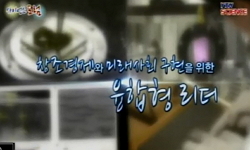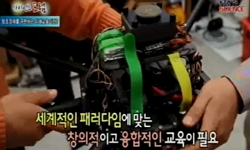This study focus on King Sejong’s Viewpoint Confucianism and Buddhism, which is praised as the best castle of the Joseon Dynasty, and Yulgok’s Viewpoint Confucianism and Buddhism, which is called the genius of the Joseon Dynasty. In the early Jose...
http://chineseinput.net/에서 pinyin(병음)방식으로 중국어를 변환할 수 있습니다.
변환된 중국어를 복사하여 사용하시면 됩니다.
- 中文 을 입력하시려면 zhongwen을 입력하시고 space를누르시면됩니다.
- 北京 을 입력하시려면 beijing을 입력하시고 space를 누르시면 됩니다.

세종의 유불 ‘화해’와 율곡의 유불 ‘융합’ 사상 비교 연구 = A Comparative Study On king Sejong’ reconciliation of Buddhism and confucianism and Yugok’ convergence of Buddhism and confucianism
한글로보기https://www.riss.kr/link?id=A107896097
- 저자
- 발행기관
- 학술지명
- 권호사항
-
발행연도
2021
-
작성언어
-
-
주제어
세종 ; 유불관 ; 화해 ; 율곡 ; 융합 ; King Sejong ; Viewpoint of Buddhism and Confucianism ; Reconciliation ; Yulgok ; Convergence
-
KDC
100
-
등재정보
KCI등재
-
자료형태
학술저널
-
수록면
155-187(33쪽)
-
KCI 피인용횟수
0
- DOI식별코드
- 제공처
-
0
상세조회 -
0
다운로드
부가정보
다국어 초록 (Multilingual Abstract)
Yulgok is a big pillar of Korean Neo-Confucianism. However, he had been to Geumgangsan Mountain for a while because he lost his mother. It is believed that he learned a lot about Buddhism at this time. The Buddhist colors shown in his Neo-Confucian theories, such as ‘Likizimyo’ and ‘LiTongkiguk’. This is also the case with Buddhist language shown in poetry. Especially in his conversation with the old monk, he was able to master Buddhism. This eventually shows the fusion of Confucianism and Buddhism in Yulgok. Reconciliation in King Sejong’s Viewpoint Confucianism and Buddhism and Convergence in Yulgok’s Viewpoint Confucianism and Buddhism can be a good example of understanding and overcoming the times.
This study focus on King Sejong’s Viewpoint Confucianism and Buddhism, which is praised as the best castle of the Joseon Dynasty, and Yulgok’s Viewpoint Confucianism and Buddhism, which is called the genius of the Joseon Dynasty. In the early Joseon Dynasty, a strong policy of ‘Sungyooukbul’ put pressure on Buddhism. Particularly, King Sejong exerted harsh pressure on Buddhist sects and restricted the number of Buddhist monks and temples in the country. King Sejong created Hunminjeongeum and compiled two Buddhist books to promote it. The Seokbosangjeol, which describes Sakyamuni’s life story, is valuable in many ways in Buddhist history. Meanwhile, The Wolincheonkangzigok is a collection of songs written by King Sejong. The content Emphasizes the ethical aspects of Sakyamuni. Here, it is said that the holy Buddha of Buddhism constitutes the great filial duty of Confucianism. In this sense, King Sejong was the architect of Confucian and Buddhist reconciliation in the era of the ‘Sungyooukbul’.
Yulgok is a big pillar of Korean Neo-Confucianism. However, he had been to Geumgangsan Mountain for a while because he lost his mother. It is believed that he learned a lot about Buddhism at this time. The Buddhist colors shown in his Neo-Confucian theories, such as ‘Likizimyo’ and ‘LiTongkiguk’. This is also the case with Buddhist language shown in poetry. Especially in his conversation with the old monk, he was able to master Buddhism. This eventually shows the fusion of Confucianism and Buddhism in Yulgok. Reconciliation in King Sejong’s Viewpoint Confucianism and Buddhism and Convergence in Yulgok’s Viewpoint Confucianism and Buddhism can be a good example of understanding and overcoming the times.
참고문헌 (Reference)
1 오경후, "李珥의 佛敎認識에 대한 硏究成果와 課題" (사)율곡학회 18 : 117-151, 2009
2 "栗谷全書"
3 "한국민족문화대백과"
4 "태종실록"
5 문진영, "조선조 왕실불사에 있어서의 훈민정음 활용에 관한 연구" 한국불교학회 (80) : 373-406, 2016
6 이봉춘, "조선시대불교사" 민족사 2015
7 박선경, "조선 세종대 『사리영응기』 편찬과 왕실불사의 전통" 동국역사문화연구소 (67) : 273-306, 2019
8 김상일, "율곡이이의 선체험과 그 시세계" 한국문학연구소 (24) : 233-252, 2001
9 이희재, "율곡의 불교관" (사)율곡학회 11 : 2005
10 오철우, "율곡의 性理學과 禪學의 만남에 대한 小考" 한국사상문화학회 (90) : 375-404, 2017
1 오경후, "李珥의 佛敎認識에 대한 硏究成果와 課題" (사)율곡학회 18 : 117-151, 2009
2 "栗谷全書"
3 "한국민족문화대백과"
4 "태종실록"
5 문진영, "조선조 왕실불사에 있어서의 훈민정음 활용에 관한 연구" 한국불교학회 (80) : 373-406, 2016
6 이봉춘, "조선시대불교사" 민족사 2015
7 박선경, "조선 세종대 『사리영응기』 편찬과 왕실불사의 전통" 동국역사문화연구소 (67) : 273-306, 2019
8 김상일, "율곡이이의 선체험과 그 시세계" 한국문학연구소 (24) : 233-252, 2001
9 이희재, "율곡의 불교관" (사)율곡학회 11 : 2005
10 오철우, "율곡의 性理學과 禪學의 만남에 대한 小考" 한국사상문화학회 (90) : 375-404, 2017
11 차현실, "월인천강지곡의 종합적 고찰" 이화여대한국어문학연구소 2000
12 "월인천강지곡"
13 "월인석보"
14 송석구, "송석구 교수의 불교와 유교 강의" 예문서원 2015
15 이종우, "세종조의 불교 정책" 한국종교학회 (50) : 159-185, 2008
16 김종명, "세종의 불교관과 유교 정치" 불교학연구회 25 : 239-282, 2010
17 조남욱, "세종의 불교 수용에 관한 연구" 한국윤리교육학회 (24) : 299-314, 2011
18 "세종실록"
19 김성순, "세종대의 불교정책과 한증승(汗蒸僧)" 한국종교학회 74 (74): 95-114, 2014
20 "석보상절"
21 "鶴峯集"
22 "陰崖日記"
23 "退溪集"
24 강창규, "梅月堂 金時習에 대한 李珥의 평가 ‘心儒迹佛’에 대한 고찰 -개인적 공감과 시대적 맥락을 중심으로-" 대동한문학회 (구.교남한문학회) 58 (58): 141-169, 2019
25 오지섭, "16세기 조선 성리학파의 불교인식" 한국종교학회 (36) : 33-72, 2004
동일학술지(권/호) 다른 논문
-
- (사)율곡연구원
- 진상훈 ( Jin Sang Hun )
- 2021
- KCI등재
-
- (사)율곡연구원
- 최재목 ( Choi Jae Mok )
- 2021
- KCI등재
-
- (사)율곡연구원
- 이승율 ( Lee Sung Ryule )
- 2021
- KCI등재
-
- (사)율곡연구원
- 장승구 ( Jang Seung Koo )
- 2021
- KCI등재
분석정보
인용정보 인용지수 설명보기
학술지 이력
| 연월일 | 이력구분 | 이력상세 | 등재구분 |
|---|---|---|---|
| 2022 | 평가예정 | 재인증평가 신청대상 (재인증) | |
| 2019-01-01 | 평가 | 등재학술지 유지 (계속평가) |  |
| 2016-01-01 | 평가 | 등재학술지 선정 (계속평가) |  |
| 2015-01-01 | 평가 | 등재후보학술지 유지 (계속평가) |  |
| 2013-01-01 | 평가 | 등재후보 1차 PASS (등재후보1차) |  |
| 2012-01-01 | 평가 | 등재후보학술지 유지 (기타) |  |
| 2011-01-01 | 평가 | 등재후보학술지 유지 (등재후보2차) |  |
| 2010-06-23 | 학술지명변경 | 한글명 : 율곡사상연구 -> 율곡학연구외국어명 : 미등록 -> JOURNAL OF YULGOK-STUDIES |  |
| 2010-01-01 | 평가 | 등재후보 1차 PASS (등재후보1차) |  |
| 2008-01-01 | 평가 | 등재후보학술지 선정 (신규평가) |  |
학술지 인용정보
| 기준연도 | WOS-KCI 통합IF(2년) | KCIF(2년) | KCIF(3년) |
|---|---|---|---|
| 2016 | 0.57 | 0.57 | 0.55 |
| KCIF(4년) | KCIF(5년) | 중심성지수(3년) | 즉시성지수 |
| 0.49 | 0.47 | 1.667 | 0.11 |





 KCI
KCI KISS
KISS






